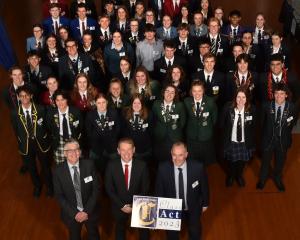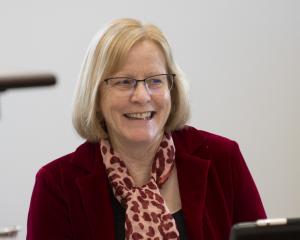Former Class Act recipient Jonathan Squire sees potential in a nuclear-powered future.
Recognised as one of the world's top young scientists, the former Dunedin man is studying towards a PhD in plasma physics and controlled fusion at Princeton University.
Unlike nuclear fission, which involves the splitting of atoms and results in large amounts of radioactive waste, fusion is a process in which the nuclei of atoms are fused together. This releases enormous amounts of energy, as occurs naturally in the core of the sun.
Squire is in New Jersey on an international Fulbright science and technology fellowship, one of only 40 such awards presented worldwide annually.
The Princeton Plasma Physics Laboratory, where he is based, has been operating since people began working on fusion in the 1950s and is the scene of many of the field's biggest discoveries and breakthroughs. One of its experiments is worth $US100 million ($NZ123 million) and involves several hundred people; others are doing research to support the world's largest experimental reactor being built in France.
Fusion power aims to harness the energy released when two light nuclei fuse to form a heavier nucleus, Squire says.
For example, two hydrogen atoms can collide to create a helium atom. The helium atom is slightly lighter than the two hydrogens and this difference in mass is converted into enormous amounts of energy.
The only problem is that the hydrogen nuclei are strongly charged and intensely repel each other so the hydrogen has to be heated to super-hot temperatures to get a substantial amount of power.
Confining the hydrogen gas while heating it up enough to produce power is the basic challenge in making fusion a viable form of commercial energy production.
"One of the most promising ways of achieving this is based on making the hydrogen container from magnetic fields. This way, the hot gas doesn't just cool off instantly, melting the walls in the process. The basic idea is that the hot hydrogen nuclei follow the magnetic field lines so if we twist the field lines into a doughnut shape, they are stuck inside and can be heated enough to create a power station."
The only significant disadvantage with fusion power is that it is "really difficult to make work", the former Logan Park High School pupil says.
The necessary fuels - hydrogen and lithium - can be obtained easily and limitlessly from sea water; the only major waste produced is helium, which is useful anyway; and it is impossible for a fusion reactor to melt down in the same way as a nuclear fission power plant.
"The reaction is so difficult to start in the first place that any slight perturbation to the system will just cause the gas to hit the wall and cool to normal temperatures."
Nuclear fusion also lacks the disadvantages of solar, wind and hydro-power in that a power station could be placed anywhere and not be subject to fluctuations because of changing weather.
Squire says there are still some big physics and engineering challenges to resolve but the main obstacle is funding.
"It is expensive to build test reactors, and to make rapid progress there will need to be several [operating] at once so they can build upon each other."
One such experimental reactor is being built in southern France. Called Iter (International Thermonuclear Experimental Reactor), it has the backing of the European Union, the United States and Russia among others, and will advance the work done at the Jet (Joint European Torus) reactor in England since 1983.
Designed to produce substantially more power than it consumes, Iter will, hopefully, be the last step before a demonstration reactor is hooked up to the electricity grid.
A University of Otago physics graduate whose parents are both scientists, Squire says he is attracted not only by the benefits of fusion power, but the "interesting" physics involved: "The field is a nice mix of applied and pure research."
Since moving to the United States two years ago, he has also found time to pursue other interests, such as cello and rock climbing. Earlier this year, he scaled Moonlight buttress in Utah.
While Squire plans to return to New Zealand after completing his PhD, he would like to work on research that supports the Iter project in some way.
Predictably, the 24-year-old rates climate change and environmental pressures because of demographic shifts as the biggest issues facing his generation.
"The current economic system is centred around the idea of limitless resources and it's very obvious that this isn't even close to being true in today's world."
Addressing the issue will require a much more serious effort from First World countries, but there is little political will to do anything and the recession is being used as justification for large government spending cuts, he says.
"Making any significant change will certainly require enormous public and private investment, probably on a scale that has never been seen in history outside of war."












